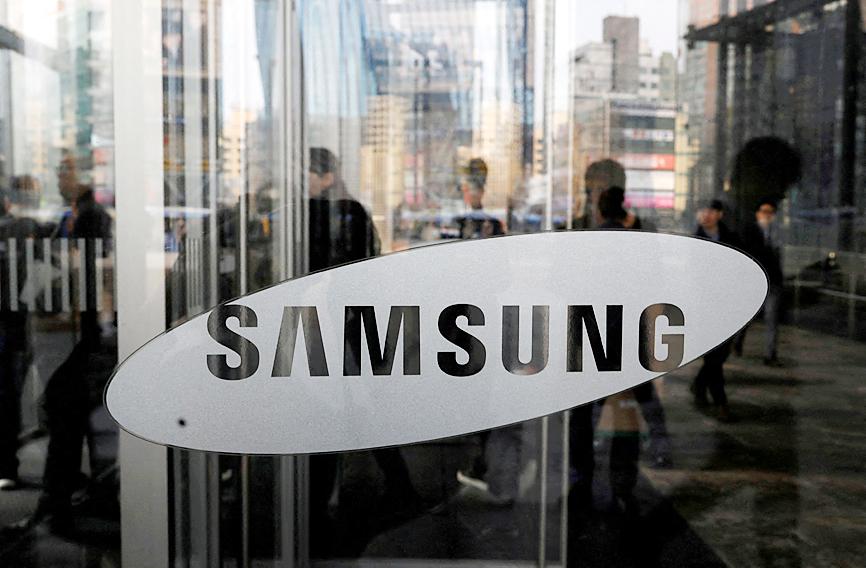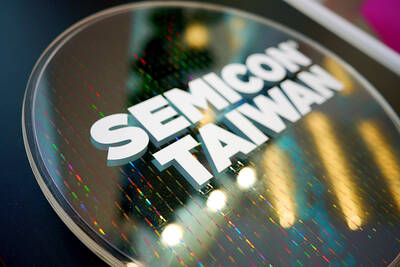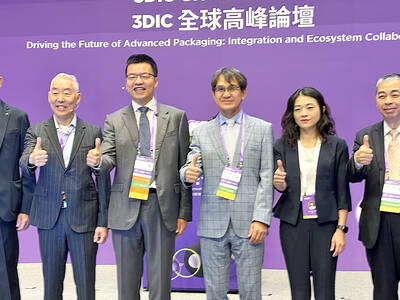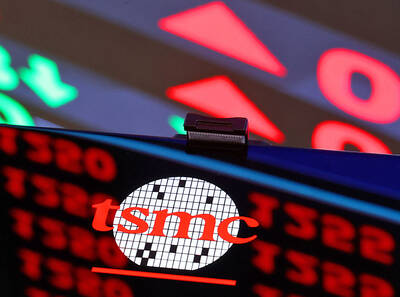Samsung Electronics Co is talking with foundry clients about charging as much as 20 percent more for making semiconductors this year, joining an industry-wide push to hike prices to cover rising costs of materials and logistics.
Contract-based chip prices are likely to rise around 15 percent to 20 percent, depending upon the level of sophistication, people familiar with the matter said.
Chips produced on legacy nodes would face bigger price hikes, while new pricing would be applied from the second half of this year, they said, adding that Samsung has finished negotiating with some clients and is in discussions with others.

Photo: Reuters
Samsung’s decision is a shift from last year’s relatively stable pricing policy, when the industry rushed to raise prices in the wake of a global chip shortage. The company is facing multiple risks such as the war in Ukraine, lockdown measures in China, rising interest rates and inflation. Those are throwing a wrench into business plans typically made a few years in advance.
The move translates into additional pressure on makers of smartphones, cars and game consoles to lift the prices consumers pay. Samsung and Taiwan Semiconductor Manufacturing Co (TSMC, 台積電) account for more than two-thirds of global capacity for outsourced chips.
Costs for chipmakers are now rising at about 20 to 30 percent on average on all fronts, from chemicals, gas and wafers to equipment and construction materials.
Contract chip manufacturers including TSMC and United Microelectronics Corp (UMC, 聯電) are telling clients that they plan to raise prices by a mid-to-high single-digit percentage, on the heels of a price hike several months ago.
Industry leader TSMC has told clients that it plans to raise prices by about 5 percent to 8 percent next year, following a 20 percent price hike last year, the Nikkei said.
UMC is also planning another round of 4 percent price hikes in the second quarter. ASML Holding NV — a key supplier to Samsung and TSMC — warned last month of rising pressure on labor costs, in addition to higher material and transportation costs.
The shortage forces customers to prioritize the ability to procure and secure needed chips over prices. Semiconductor makers have been trying to improve profitability, partly by shifting more weight to high-end chips, said Bloomberg Intelligence analyst Masahiro Wakasugi.
“This is an inevitable move for Samsung,” Wakasugi said. “Some customers may accept higher prices if they can get chips earlier than others.”

With this year’s Semicon Taiwan trade show set to kick off on Wednesday, market attention has turned to the mass production of advanced packaging technologies and capacity expansion in Taiwan and the US. With traditional scaling reaching physical limits, heterogeneous integration and packaging technologies have emerged as key solutions. Surging demand for artificial intelligence (AI), high-performance computing (HPC) and high-bandwidth memory (HBM) chips has put technologies such as chip-on-wafer-on-substrate (CoWoS), integrated fan-out (InFO), system on integrated chips (SoIC), 3D IC and fan-out panel-level packaging (FOPLP) at the center of semiconductor innovation, making them a major focus at this year’s trade show, according

DEBUT: The trade show is to feature 17 national pavilions, a new high for the event, including from Canada, Costa Rica, Lithuania, Sweden and Vietnam for the first time The Semicon Taiwan trade show, which opens on Wednesday, is expected to see a new high in the number of exhibitors and visitors from around the world, said its organizer, SEMI, which has described the annual event as the “Olympics of the semiconductor industry.” SEMI, which represents companies in the electronics manufacturing and design supply chain, and touts the annual exhibition as the most influential semiconductor trade show in the world, said more than 1,200 enterprises from 56 countries are to showcase their innovations across more than 4,100 booths, and that the event could attract 100,000 visitors. This year’s event features 17

EXPORT GROWTH: The AI boom has shortened chip cycles to just one year, putting pressure on chipmakers to accelerate development and expand packaging capacity Developing a localized supply chain for advanced packaging equipment is critical for keeping pace with customers’ increasingly shrinking time-to-market cycles for new artificial intelligence (AI) chips, Taiwan Semiconductor Manufacturing Co (TSMC, 台積電) said yesterday. Spurred on by the AI revolution, customers are accelerating product upgrades to nearly every year, compared with the two to three-year development cadence in the past, TSMC vice president of advanced packaging technology and service Jun He (何軍) said at a 3D IC Global Summit organized by SEMI in Taipei. These shortened cycles put heavy pressure on chipmakers, as the entire process — from chip design to mass

SEMICONDUCTOR SERVICES: A company executive said that Taiwanese firms must think about how to participate in global supply chains and lift their competitiveness Taiwan Semiconductor Manufacturing Co (TSMC, 台積電) yesterday said it expects to launch its first multifunctional service center in Pingtung County in the middle of 2027, in a bid to foster a resilient high-tech facility construction ecosystem. TSMC broached the idea of creating a center two or three years ago when it started building new manufacturing capacity in the US and Japan, the company said. The center, dubbed an “ecosystem park,” would assist local manufacturing facility construction partners to upgrade their capabilities and secure more deals from other global chipmakers such as Intel Corp, Micron Technology Inc and Infineon Technologies AG, TSMC said. It